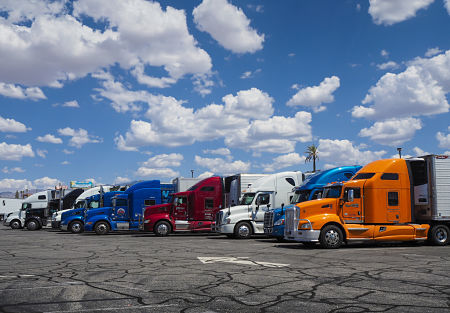Parking continues to be a national trucking issue
Last fall, the American Transportation Research Institute (ATRI), reported that truck parking remains one of the key industry concerns identified in a national survey of trucking companies.
Truck parking joined driver shortage, driver retention, driver compensation, and lawsuit abuse in the top five issues facing the trucking industry.
“The ATRI list of top industry issues provides a critical snapshot of the challenges impacting our industry at any given moment,” said ATA Chair Sherri Garner Brumbaugh, president and CEO of Garner Trucking, “and this year is no exception as supply chain constraints dominate the nation’s headlines. ATRI’s annual analysis not only captures the industry’s sentiment on the criticality of each of these issues but also maps out a course for addressing each through the stakeholder-ranked strategies.”
The report stated: “This is the 10th year that the lack of available truck parking has made the top 10 list of industry concerns, and among commercial drivers it has consistently ranked in their top three.”
Earlier this year, a highway bill provision introduced to the US House of Representatives included nearly $1 billion in truck parking grants, but was later removed, according to ATRI.
Overcrowded truck stops force drivers to often spend hours scavenging for parking wherever they can find it, even in illegal and unsafe spots. The problem has simmered for decades, as transportation has been overwhelmed by the online shopping boom, lower inventories, and federal mandates on driver rest. But truckers say the coronavirus pandemic has brought the issue to a breaking point.
The word “parking” doesn’t appear anywhere in the Biden administration’s 2,333-word “Trucking Action Plan” released last month as part of the rollout of the new infrastructure law during the height of the pre-holiday emphasis on supply-chain snags.
While the Biden administration is focused on congestion at coastal ports and a broader truck driver shortage, the lack of safe and legal parking spaces for rigs also causes ripples throughout the supply chain, according to a report in Time magazine.
Most companies do not reimburse drivers for parking, and over-the-road truckers get paid by the mile, not the hour. That means an early exit to grab an available spot — an average of 56 minutes early, according to a 2016 study of trucker diaries — costs drivers an average of $4,600 a year, or 10 percent of their annual pay.
ATRI found that 48 percent of drivers said they are not willing to pay to park; only 10 percent say they would pay more than $10. Overnight parking at Pilot Flying J Inc. truck stops near Tulsa, Oklahoma — the most-searched city in its online reservation system — ranged from $12 to $26.
NATSO, a truck-stop operators association, said any additional parking should complement the services already supplied by commercial truck stops.
“NATSO has long maintained that the best way to address any truck parking capacity concerns is for motor carriers to negotiate truck parking in their contractual relationships with truck stops and travel plazas,” NATSO’s Tiffany Wlazlowski Neuman wrote in a memo to member truck stops last year.
The problem is most pressing in the Northeast. Outside of Hawaii, which does not have long-haul routes, the states with the fewest spaces per truck mile traveled are Massachusetts, Maine, Tennessee, Connecticut, Delaware, and New York. Drivers say staging just outside of metropolitan areas is key to making narrow pick-up and delivery windows, according to Time.
The Federal Highway Administration says the biggest need is within 20 miles of urban areas. Local zoning laws and not-in-my-back-yard political pressure have constrained new parking in suburban areas where its most needed, business leaders say.
“That’s why the federal government needs to be involved. We don’t see it as a competition between the public and private sector,” said Ed Mortimer, the U.S. Chamber of Commerce’s vice president of Transportation and Infrastructure. “There is definitely a role for the private sector to do this. We need both.”






